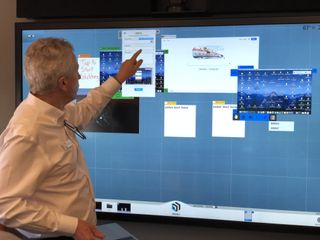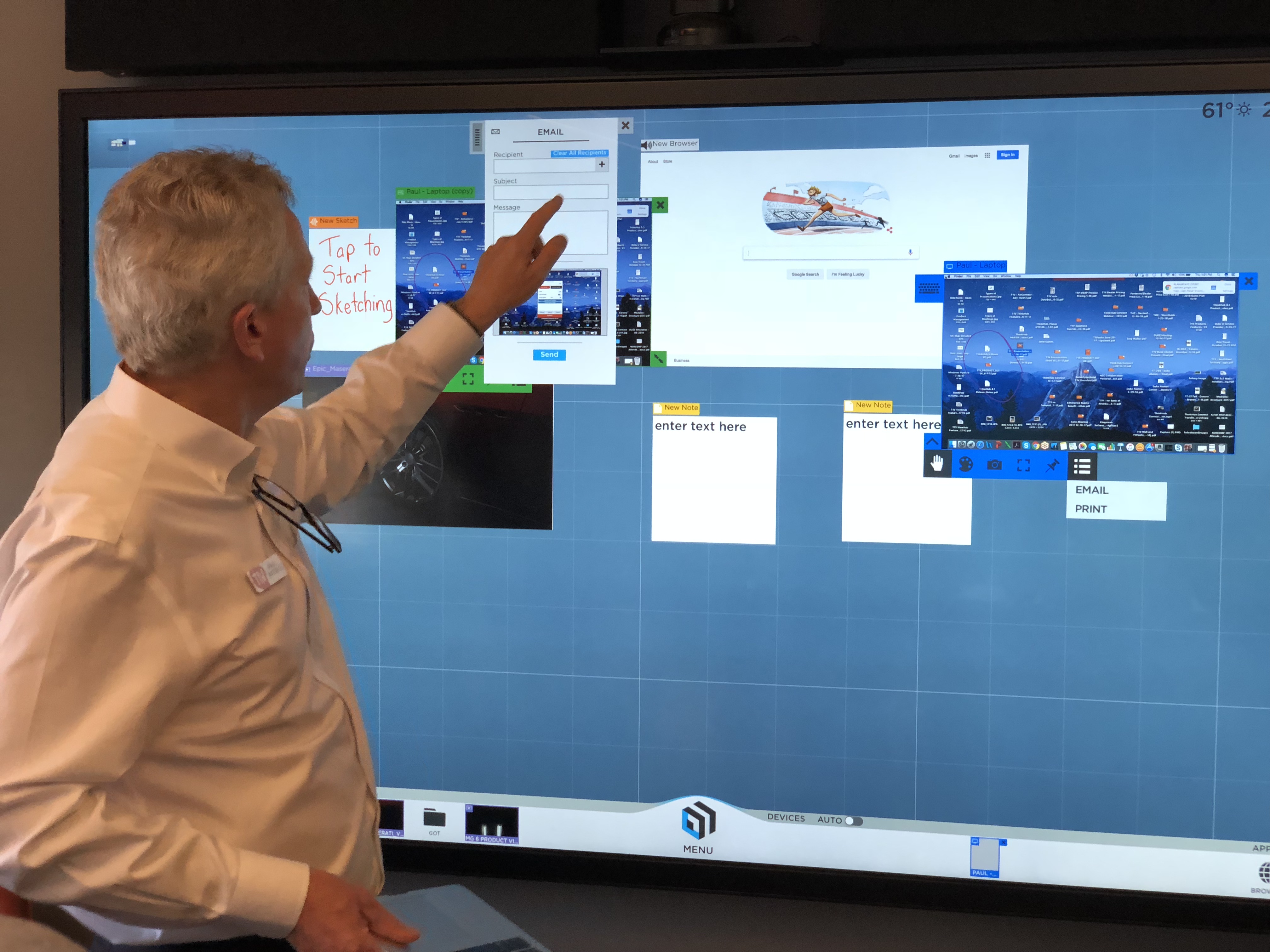There are a lot of different solutions on the market today for enterprise collaboration, active learning, and custom interactive video walls….but there’s only one company with a platform that does them all.
That company is T1V, and at an event on April 26 hosted by HB Communications at Leyard and Planar’s New York City showroom, the firm gave local integrators and end users the opportunity to see firsthand how its ThinkHub suite of software solutions can transform the way institutions work and teach.
Essentially, the company specializes in multi-touch, interactive, BYOD-friendly software that runs from Macintosh hardware and transforms just about any touch-capable display into a collaboration ecosystem. It comes in multiple iterations tailored for its core use cases. These include ThinkHub for BYOD collaboration and videoconferencing in enterprises; ViewHub for presentation; and ThinkHub Connect, a hybrid solution aimed specifically at active learning classrooms—a burgeoning market upon which the company is placing increased emphasis.

“This is software based; that’s really what sets us apart,” said Karen George LeClair, T1V’s business development manager, higher education. “There’s less hardware, fewer points of failure, you’re continuously getting updates and upgrades. So what you purchase today is going to be a better product two years from now, three years from now. There’s a singular user experience across all projects, so it’s an intuitive user experience.”
Complementing ThinkHub and ViewHub is the company’s device-agnostic BYOD application, AirConnect, which is free and can be downloaded and operated by an unlimited number of users. “This is the piece that we feel is different from what anyone else has out there,” LeClair said. “Because through that, you can view the canvas, you can interact with the canvas, send things to the canvas—files, notes, things of that nature.”
According to LeClair, the education-focused ThinkHub Connect has been adopted by several prominent universities—including Texas A&M, Quinnipiac, and the University of Wisconsin—and is favored because of its intuitiveness, scalability, and effectiveness at facilitating group-based learning. “The instructor can walk in, wirelessly connect to the display, and have his or her content up there and be able to present through annotations,” she said. “They can provide feedback through the tablet; they can be walking around the classroom activating group discussion while giving feedback at the same time.”
Another differentiator for the company, LeClair pointed out, is in what it can provide for multiuse spaces in corporations and educational institutions. T1V has long specialized in software for larger-format, “wow-factor” video walls—think touch-interactive timeline walls that display a company or university’s history along with photos and videos. With the company’s software, these walls can double as ThinkHub canvases, allowing for far greater utilization.

Following LeClair’s presentation, attendees were able to try out the T1V software on several different Planar displays throughout the showroom. During this time, Paul Patrick, the company’s vice president of business development, led demonstrations and fielded questions from a group of higher education technology managers.
For those interested in trying the platform, T1V has demo equipment that it can bring onsite, as well as a ThinkHub Connect mobile demo unit that it brings to campuses and corporate facilities.











